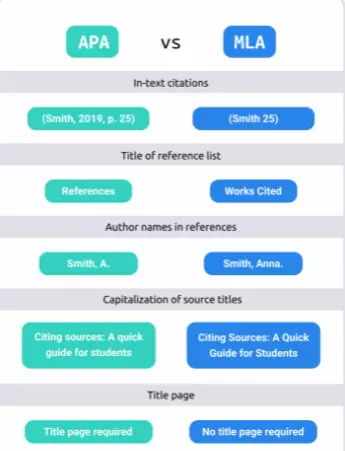How to Introduce an Author in an Essay: Tips for MLA and APA

When writing an essay, you are required to cite and reference any outside source that has been used. Any information that is not general knowledge should be cited. If you do not cite and reference such information, then your essay will be plagiarized.
Plagiarism is when you copy another author’s text or information to your essay. By doing so, you are assuming ownership of another author’s intellectual property, which is an academic crime.
As such, you must cite the owner of the outside information within your essay to avoid plagiarism.
This brings in the issue of the ways used to introduce an author in an essay. Introducing an author is part of acknowledging that you have borrowed from their work and is part of citations.
When you do not wish to create a standard in-text citation such as (Mathew, 2021) in APA or (Mathew 25) in MLA, you can introduce the authors as part of a statement.
The next section of this article will explore the various ways of introducing an author in an essay.
Need Help with your Homework or Essays?
5 Ways to Effectively Introduce an Author in an Essay
You can effectively introduce an author in an essay by mentioning their name and text, use a prefix like ‘according to’, mentioning their stance, referring to their book in the beginning, or reporting the argument then the name.
The choice that you make depends on the context and content of the citation. Let us explore these in detail.
1. Mention Their Name and Book
This is one of the various ways to introduce an author in an essay. In this case, you will have to mention either their surname as you start your sentence.

The author’s name is then followed by the book, article, research, or any formal peer-reviewed text they have written, and then continue stating what they have said.
For example, let us imagine that an author known as Seth McFarlane has written a book or text titled “The Root Causes of Socioeconomic Inequality in the United States.”
If you want to introduce them in your essay, you can say that Seth McFarlane stated in his book “The Root Causes of Socioeconomic Inequality in the United States” that…
You can also use their surname, which is McFarlane. In this case, the statement will look like this: McFarlane stated in his book titled “The Root Causes of Socioeconomic Inequality in the United States” that…
However, once you have introduced the author, there is no need to repeat the same statement elsewhere. You should formally cite them using either APA or MLA format, as discussed in this article.
2. Use “According to” Pretext
This is also a widely accepted method used to introduce an author in an essay. It is commonly used because it links the previous point or information with the author and his argument.
As noted, when writing an essay and you have not conducted primary research/study by yourself, then you will have to use other sources as evidence of your claims. To introduce the source’s author, you can use the phrase “according to…”
For example, let us imagine our author is still Seth McFarlane and the title of his book or text is still “The Root Causes of Socioeconomic Inequality in the United States.”
To introduce the author, you can say: “According to Seth McFarlane, one of the root causes of socioeconomic inequality in the United States is racial inequality and racism in general.”
From the above example, you have noticed that the text that follows the “according to Seth McFarlane” phrase has to be a factual statement that the author has stated in their book.
It is a form of citation. It should be noted that you do not have to use their full name. You can use their surname.
3. Mention Their Name and What They Said
Mentioning the author’s name and what they said in their book or text is also a viable way of introducing an author in your essay. In this case, you do not have to write the title of their work. You only need to either paraphrase or quote (“…”) what they said.
For example, if you want to back up an argument in which you have stated that socioeconomic inequality is caused by racial inequality and racism in the United States, you introduce an author who corroborates the claim.
You can state that “Seth McFarlane also notes that one of the root causes of socioeconomic inequality in the United States is racial inequality and racism in general”.
4. Use the phrase “In His Book, (The Author) Argues That…”

This is a good strategy to introduce an author in your essay while still maintaining the continuity or flow of your arguments.
In this case, you do not have to mention the book’s title or text.
You only need to note the author’s name so that the readers can know who authored your source of information.
For example, if you use this method, your statement will look like this: “In his book, Seth McFarlane argues that the root cause of socioeconomic inequality in the United States is racial inequality and racism in general”.
5. Present the Argument, Then the Author Who Made It
Though this method is not widely used, it can also be applied when you want to introduce an author in your essay. It should be noted that this is not the same as presenting the arguments and then putting a formal APA or MLA in-text citation at the end.
To introduce the author using this strategy, your statement will look like this: “The root cause of socioeconomic inequality in the United States is racial inequality and racism in general, Seth McFarlane notes”.
How to Cite Authors in an Essay
If you have not introduced the authors within your text, you should cite them using MLA or APA format to ensure that you acknowledge the source of the information. While other citation formats can be used, MLA and APA are the most common formats in academic essay writing.
How to Cite Authors in MLA

When it comes to citing authors in MLA format, you should include their surname followed by the page number from which you have read the information.
Since this should be an in-text citation, you should put it into brackets at the end of the statement.
It would look like this: The root cause of socioeconomic inequality in the United States is racial inequality and racism in general (McFarlane 23).
How to Cite Authors in APA
Concerning the APA format, you include the author’s surname followed by the year their book or text was published.
This is also put into brackets. The statement would look like this:
“The root cause of socioeconomic inequality in the United States is racial inequality and racism in general (McFarlane, 2021).
Note that a comma separates the surname and year of publication. This makes the citation complete and gives the year and the author.
Get a Brilliant Essay today!
Let our essay writing experts help you get that A in your next essay. Place your order today, and you will enjoy the benefits.
Dos and Don’ts of Introducing an Author in an Essay
When it comes to the Dos, always introduce the author using their surname followed by what they said. While you can use their first and last names to introduce the authors, it is advisable to use their surnames to avoid including unnecessary long names.

Plagiarism-checking tools may also match long names, and your paper will be considered as plagiarized.
When the authors are more than two, do not introduce them all.
Imagine more than seven people have co-authored a book, and you introduce them all.
This would not make sense. You should only include the surname of the first author followed by ‘et al.’
Concerning the don’ts, avoid using the full names of the author(s) when introducing them in an essay.
Secondly, once you have introduced the author(s), don’t introduce them again. Instead, use in-text citations to acknowledge them.
Finally, don’t write the full names of all the authors. Just use ‘et al. to show that there are more authors. Read our guide on how to use references in the introductory paragraphs for more.

Josh Jasen or JJ as we fondly call him, is a senior academic editor at Grade Bees in charge of the writing department. When not managing complex essays and academic writing tasks, Josh is busy advising students on how to pass assignments. In his spare time, he loves playing football or walking with his dog around the park.




